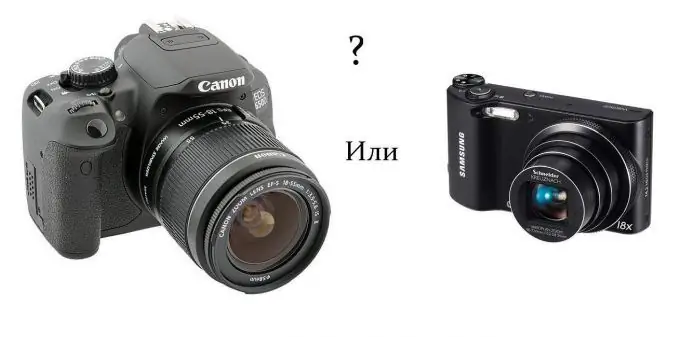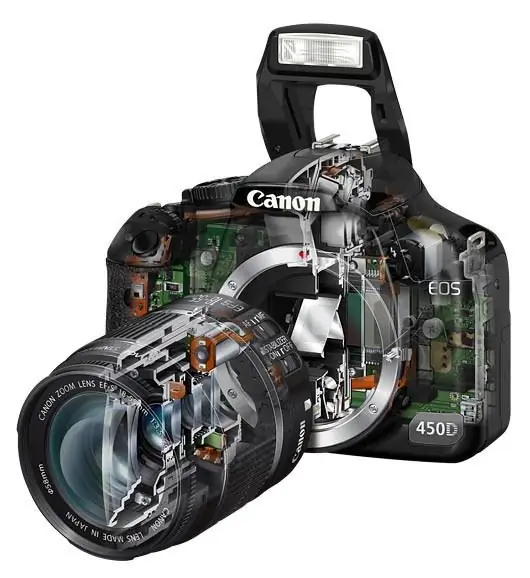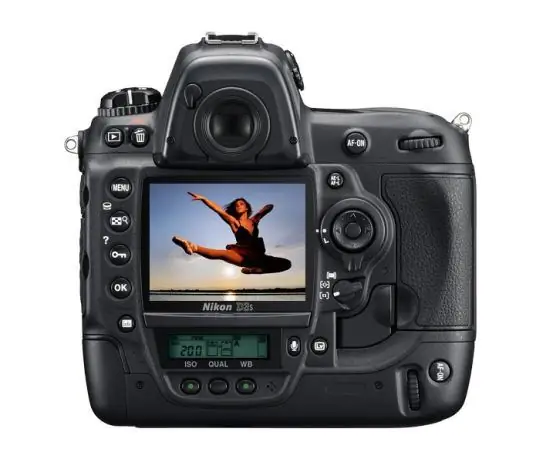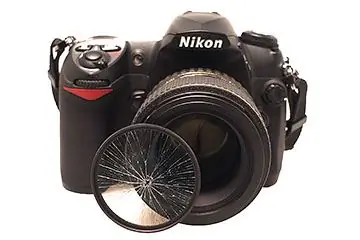DSLRs have their own advantages and disadvantages. Of course, each user has their own evaluation criteria, but there are objective factors that should be taken into account.

Let's take a look at the pros and cons.
Do not buy a DSLR if you are not satisfied with:
The size. The camera cannot be carried with you, like a mobile, anywhere, it does not fit in your pocket. It is also desirable for her to have a separate wardrobe trunk. The mass of the device also may not be small, but amateur models are not so large and it is not difficult for a man to carry it with him, but for a woman an average DSLR with a zoom lens can be an unbearable burden for constant use.
… If you are used to 15-30x optical zoom in a point-and-shoot camera, then forget about it on a DSLR. If you want to cover this range, carry 2-3 lenses with you, because each only has a 3-6x zoom range. There are 10x "ultrazoom" - for example Nikon 18-200 VR, there are more, but they are quite expensive, from $ 1000, and this is the cost of an amateur camera. However, keep in mind that compact ultrazoom is extremely "dark" and even in cloudy weather, let alone in the evening, they may not have enough light. On the other hand, if you are not photographing on a large poster, then a combination of the Nikon D3200 24MP camera with Nikkor 18-105 VR glass is quite available, which will allow you to combine optical zoom with digital, allowing you to get everything that most compact zooms can do. …
:
Photosensitivity. Even budget DSLRs allow you to shoot at ISO 1600-3200, or even more. This allows them to be wielded where the use of a flash is inappropriate. The focusing speed is also very fast.

… The fact is that battery power is not wasted on the display, because the framing is done through the optical viewfinder, and this saves energy. In addition, the soap dish constantly hides and extends the lens like a snail's horns, which is also a waste of energy. For example, without a flash on the Nikon D5100, you can snap up to 1000 frames on a standard battery.
… It works well in VR lenses. It is quite realistic to shoot a frame at a shutter speed of 1/10 sec. It also matters that you keep the camera close to your eyes when framing through the viewfinder, which is easier and more stable than holding your arms out when framing through the screen.

Ergonomics - large body sizes have their plus - the camera fits comfortably in the hand. In addition, the larger size allows you to put more controls on the case, and allows you to navigate the menu less.

… It can be unscrewed at home and can be easily cleaned, while the front glass of the lens remains clean at all times.

Users are of the opinion that a DSLR is difficult to learn. Yes, indeed, you can find more functions there, but it is not at all necessary to master them all at once. The mode dial is practically the same, the shutter button is the same, only the zoom ring has to be turned by hand, that's the whole difference.






